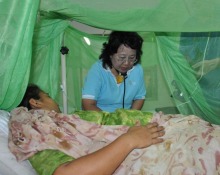The current epidemic
The first confirmed outbreak of dengue fever in Pakistan was in 1994, but a sudden rise in cases and the annual epidemic trend first occurred in Karachi in November 2005.
Since 2010, Pakistan has been experiencing an epidemic of dengue fever that has caused 16 580 confirmed cases and 257 deaths in Lahore and nearly 5000 cases and 60 deaths reported from the rest of the country. The three provinces facing the epidemic are Khyber Pakhtunkhwa, Punjab and Sindh.
WHO is providing technical assistance to the Government to combat the epidemic. This includes providing standard guidelines and capacity building in the planning and implementation of prevention and control measures. The three main areas of focus are vector control, case management and community awareness.
Responding to dengue fever
To assist with vector control, WHO entomologists studied the Aedes mosquito in Karachi during the 2005 outbreak. WHO used this information to design Pakistan-specific control interventions.
In 2008, WHO collaborated with the Federal Ministry of Health in drafting a long term plan for merging dengue prevention and control within the malaria control programme.
However, last year, in 2010, there was another sudden rise in cases with more reported cases than from the previous five years together. In response, WHO provided international consultants to advise on a vector control strategy and the clinical management of hospitalized dengue cases.
Plans for implementing the recommended interventions have been developed, but the Government has had to cope with the ongoing impact of Pakistan's worst floods in 2010 and the resulting displacement of populations. This has meant that it has had to address other priorities including polio and cholera outbreaks, along with serious malnutrition. Since June 2011, the activities of the Federal Ministry of Health have been devolved to the provincial level.
Dengue photo essay
Dengue
Dengue fever disease outbreak news, Gloabal Alert and Response, WHO headquarters
The current epidemic
The first confirmed outbreak of dengue fever in Pakistan was in 1994, but a sudden rise in cases and the annual epidemic trend first occurred in Karachi in November 2005.
Since 2010, Pakistan has been experiencing an epidemic of dengue fever that has caused 16 580 confirmed cases and 257 deaths in Lahore and nearly 5000 cases and 60 deaths reported from the rest of the country. The three provinces facing the epidemic are Khyber Pakhtunkhwa, Punjab and Sindh.
WHO is providing technical assistance to the Government to combat the epidemic. This includes providing standard guidelines and capacity building in the planning and implementation of prevention and control measures. The three main areas of focus are vector control, case management and community awareness.
Responding to dengue fever
To assist with vector control, WHO entomologists studied the Aedes mosquito in Karachi during the 2005 outbreak. WHO used this information to design Pakistan-specific control interventions.
In 2008, WHO collaborated with the Federal Ministry of Health in drafting a long term plan for merging dengue prevention and control within the malaria control programme.
However, last year, in 2010, there was another sudden rise in cases with more reported cases than from the previous five years together. In response, WHO provided international consultants to advise on a vector control strategy and the clinical management of hospitalized dengue cases.
Plans for implementing the recommended interventions have been developed, but the Government has had to cope with the ongoing impact of Pakistan's worst floods in 2010 and the resulting displacement of populations. This has meant that it has had to address other priorities including polio and cholera outbreaks, along with serious malnutrition. Since June 2011, the activities of the Federal Ministry of Health have been devolved to the provincial level.
Dengue photo essay
Dengue
Dengue fever disease outbreak news, Gloabal Alert and Response, WHO headquarters










